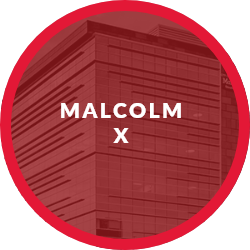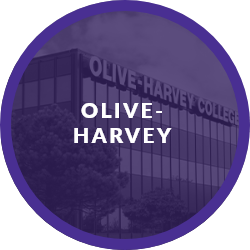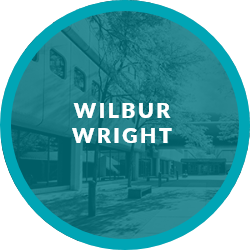From the President

Daniel López, Jr., Ph.D.
President, Harold Washington College
As we celebrate the one year anniversary of Harold Washington College’s “A Path Forward” 2021-2025 Strategic Plan implementation, I can’t help but to reflect on how we got here… Read More
President Daniel López
Harold Washington College
“With this plan, I am confident that we will improve critical student outcomes, including retention and completion. I also believe this plan will transform student, faculty, and staff experiences at our College.”
Mission, Vision, and Values
Mission
Harold Washington College is a student-centered institution that empowers all members of its community through accessible and affordable academic advancement, career development, and personal enrichment.
Vision
To be a leading institution of choice for students and to provide them with the skills required to be agents of change for themselves and the communities they choose to serve.
Values
- Embrace human diversity
- Care about the whole student
- Offer responsive and relevant education
- Pursue academic excellence
- Assess to improve learning
- Build community
- Foster global citizenship for social justice
Through these core values, we strive to embody and honor the vision of Harold Washington, former Mayor of Chicago.
City Colleges aren’t always recognized for the opportunities that they can provide – especially to those with nontraditional backgrounds. I thought it would be a stepping stone, but it’s opened so many doors for me and I feel incredibly supported as I know other nontraditional students do.
City Colleges aren’t always recognized for the opportunities that they can provide – especially to those with nontraditional backgrounds. I thought it would be a stepping stone, but it’s opened so many doors for me and I feel incredibly supported as I know other nontraditional students do.
City Colleges aren’t always recognized for the opportunities that they can provide – especially to those with nontraditional backgrounds. I thought it would be a stepping stone, but it’s opened so many doors for me and I feel incredibly supported as I know other nontraditional students do.
Rudy Cordero
Harold Washington College Alumnus | Harold Washington College transferred to Yale University
Summary of Strategies
Six strategic levers form the framework for all of City Colleges’ plans. They serve as guiding principles and beliefs that are fundamental to the holistic success of our plans. The six strategic levers and their goals are:

Our Goal: Create an Exceptional Student Experience
We promise that every experience with City Colleges, from pre-admissions to completion, will be exceptional. Every student will be able to maximize their learning inside and outside the classroom, navigate our institution with ease, make significant progress towards their goals, and feel welcome and supported by all City Colleges employees.
Our Goal: Significantly Narrow Achievement Gaps
We will become a “student-ready” and equitable institution that is designed for all students to thrive—especially those from historically and present-day marginalized communities. We will equip students with the support and resources they need to succeed in the classroom and beyond.
Our Goal: Respond to the Economic Needs of the City
We will be forward-looking and agile in developing pathways and forging partnerships that unlock transformational career opportunities for CCC students and fuel the Chicago workforce with talent that is prepared to meet the needs of the economy.
We will build a culture of excellence that inspires everyone to become the ‘best in class’ for our students and community. We hold ourselves accountable to delivering academics, experiences, and services of the highest quality. Our faculty and staff will continue to receive professional development across the district to continuously improve their practices.
Goal: Create a Collaborative and Connected Ecosystem
We will create a more collaborative and connected ecosystem to foster coordination and communication that supports student success. At each college and across the district, we will implement people, data, and technology solutions to create holistic best practices with an inclusive approach to problem solving.
Goal: Develop, Monitor, and Improve Institutional Health Measures
We will develop, monitor, and improve critical institutional health metrics that ensure financial sustainability and the well-being of our institution.
FY21-23 Targets and FY20 Outcomes
City Colleges sets a range of outcomes for its goals in future years, consisting of a “target” that establishes the baseline for accountability and a “reach” that reflects its full ambition. The table below summarizes these goals for FY21-FY23. Targets for FY24 and FY25 will be finalized in FY23. All figures are rounded to the nearest whole number.
These targets were identified prior to the onset of the COVID-19 pandemic. At the time of publication, the long-term effects of COVID-19 on community college enrollment and student success are uncertain. In the short-term, it has had a significant negative effect, with all but three community colleges in Illinois seeing enrollment declines. City Colleges will continue to strive to achieve these targets, knowing that COVID-19 will have an impact throughout the life of this plan.

Access

Momentum

Completion

Mobility
Student Experience


 Access
Access 






